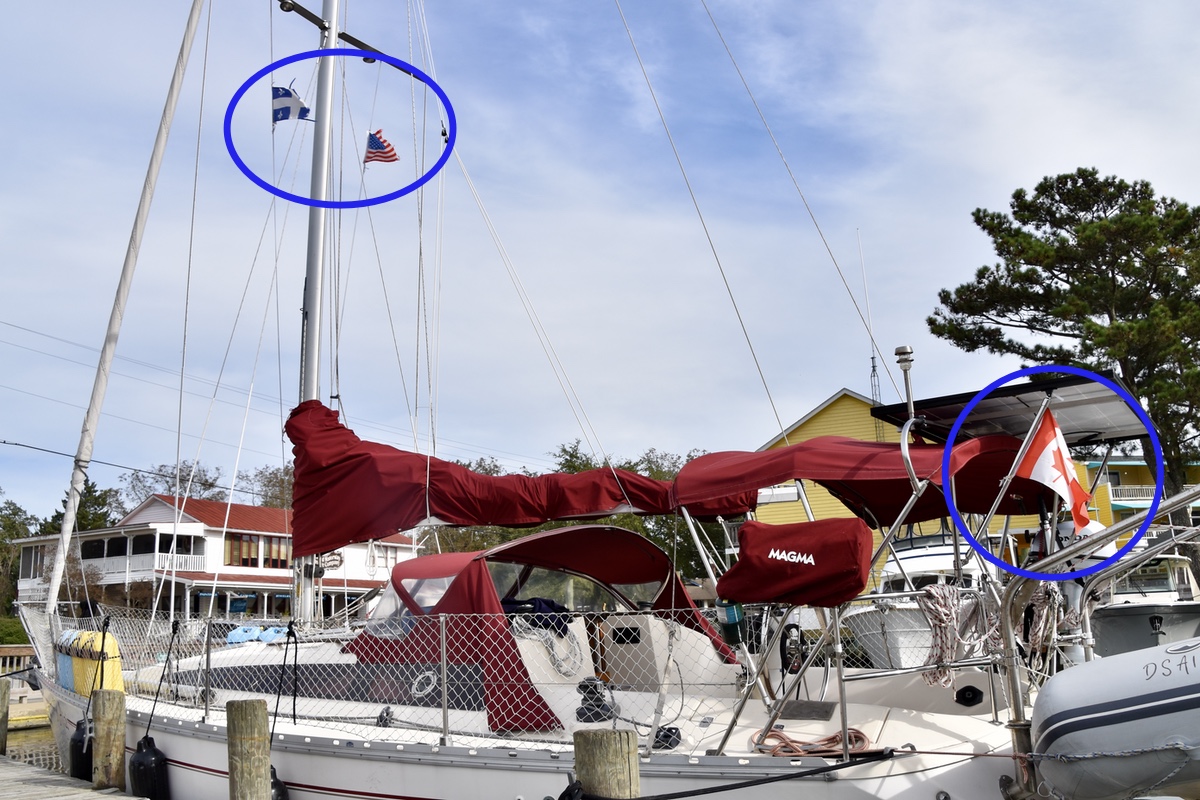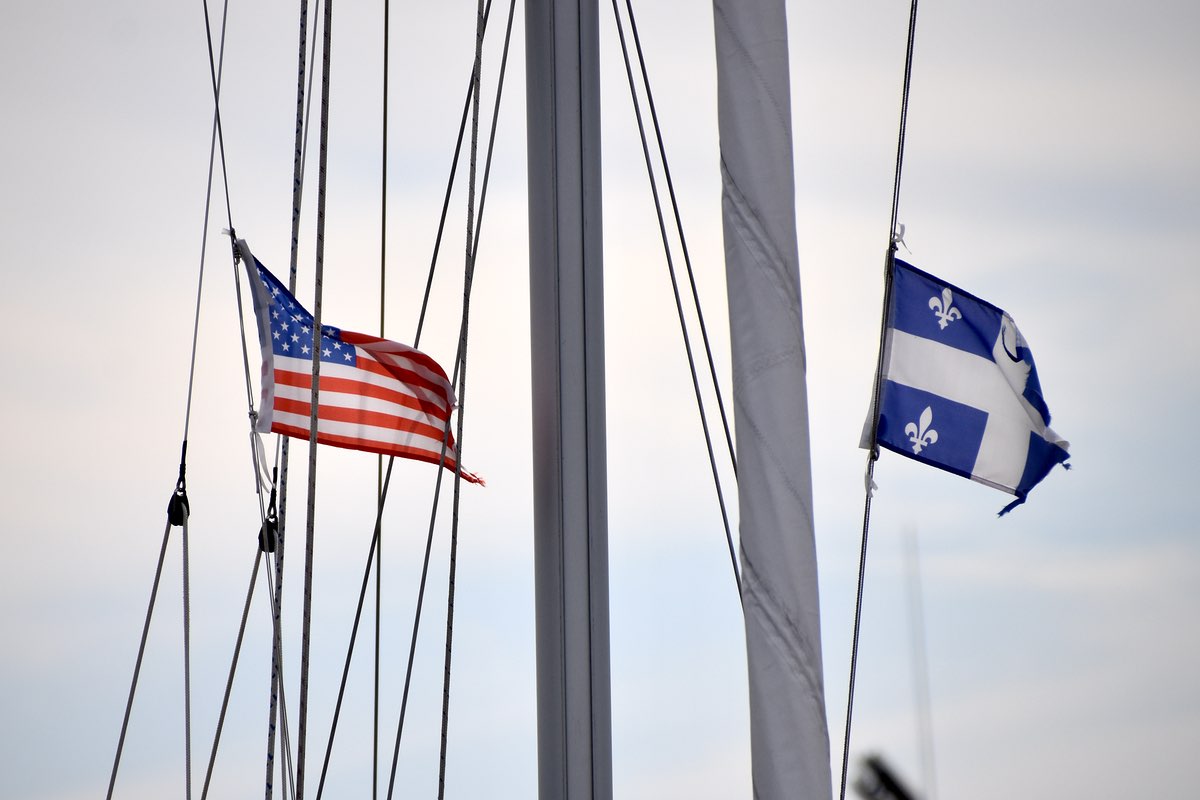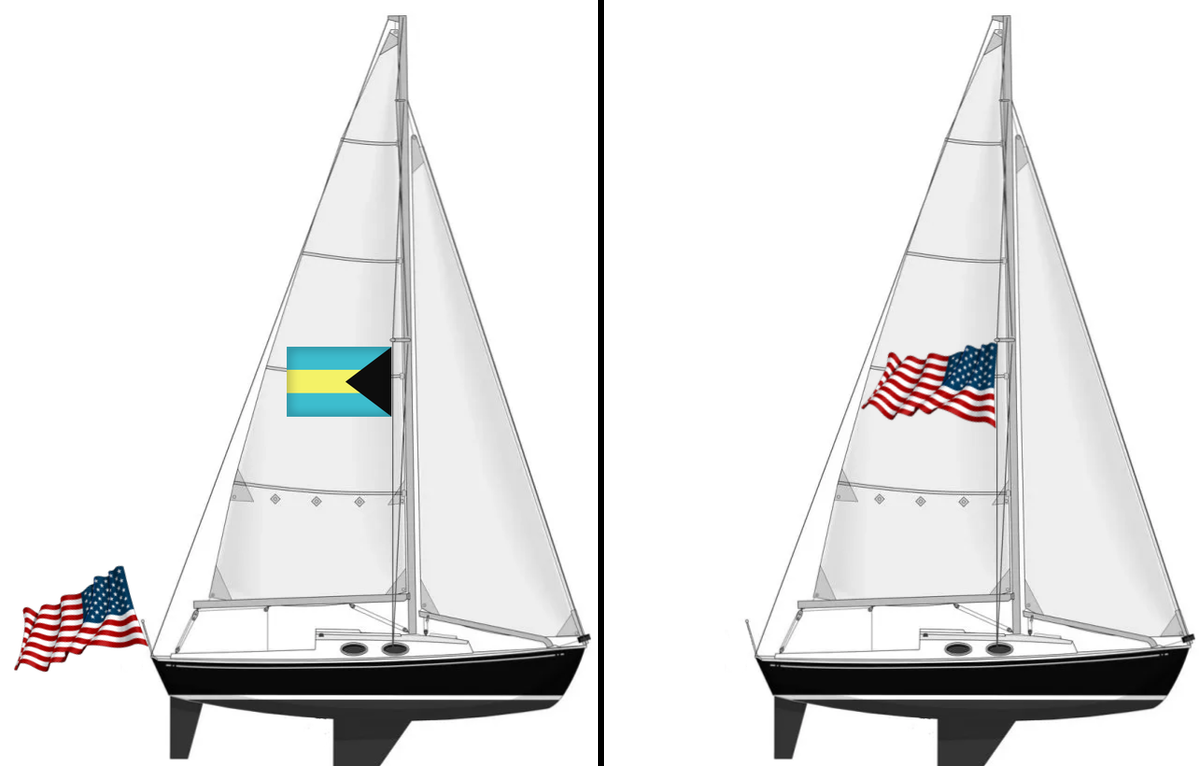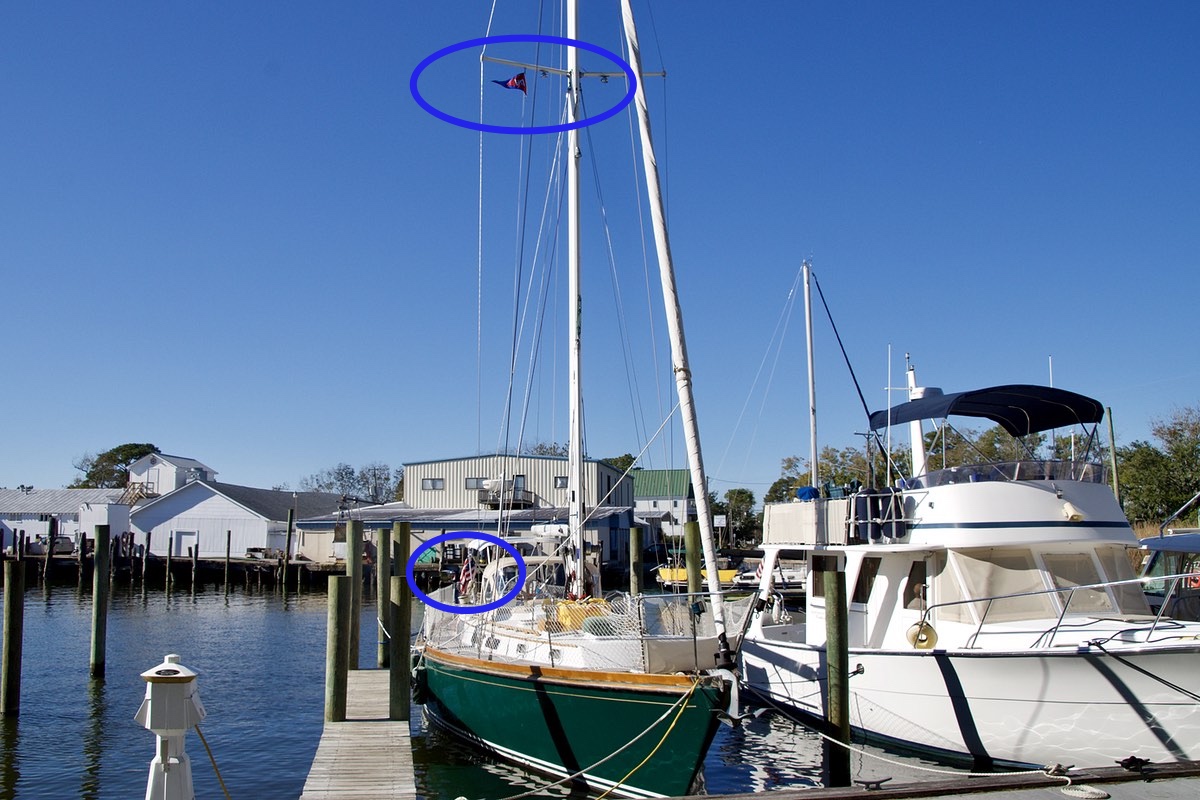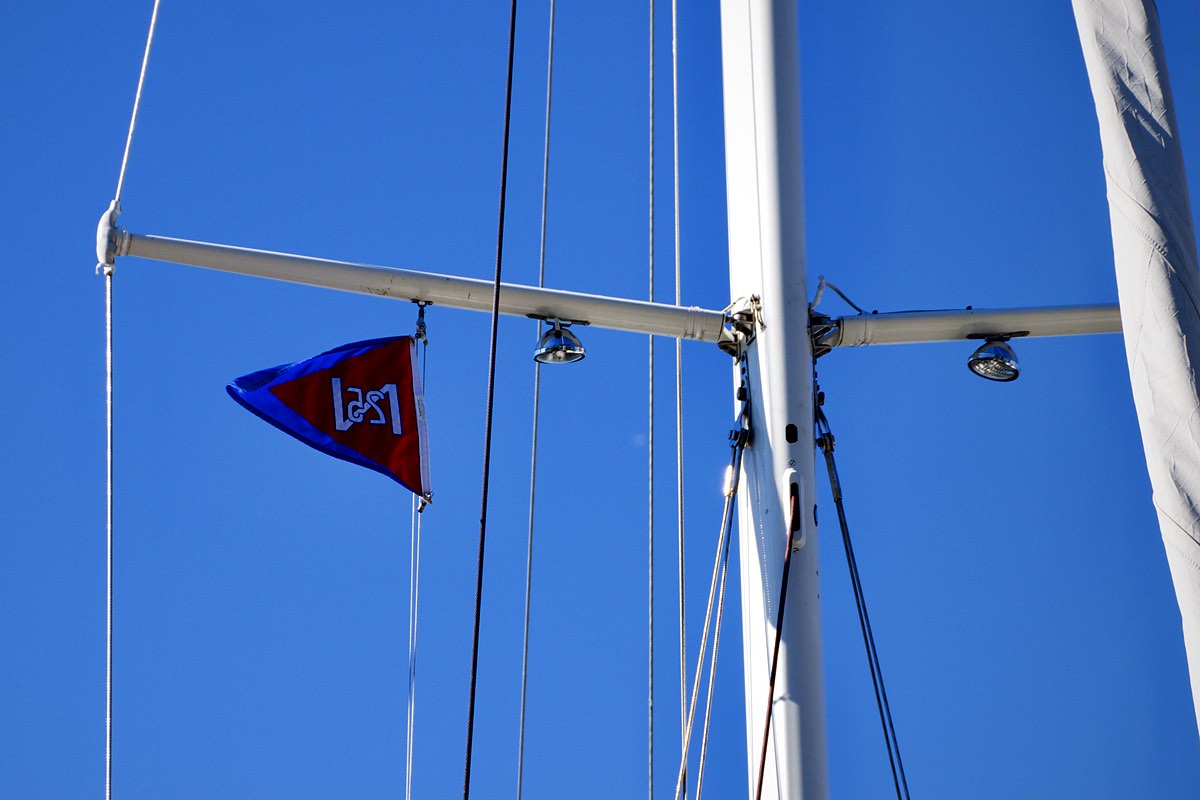It's Wednesday January 7, 2026

November 2021
Say what? Vexillology is the scholarly study of flags. Nothing in the world has more meaning per square inch than a flag.
In the Netflix series Explained (Season 3, Episode 3), the makers explain the influence, impact and power of a flag. The Netflix special explains how a small piece of cloth gives us a strong representative message. Flags evoke emotion and can lead us to unity or disruption.Anyway, here in the micro-world, self proclaimed, sailing capital of North Carolina, we can certainly do better with our flags. Sadly, many vessels have improperly displayed flags.
Begin rant…
Why does it matter?Flags are signals and displayed for mainly three reasons: to display the nationality of the vessel, to display status because of the services they offer, and to provide courtesy in accordance with the international rules and regulations. An improper flag is a beacon that shines incompetence.
Types of flagsSome of the main flags that are used on vessels are ensigns (flag with the color of nationality), jacks (flags smaller than ensign used for signaling and distinction), house flags (flag of the owner or company), pennants (flags used by ships to signal that they are warranted by the Navy to be used as war ships), and signal and rank flags.
Visiting vessel DS Alizé is from Canada (stern), has the American flag as the country it is visiting (starboard) and the Fleur-de-lis flag indicating they’re from the province of Quebec (port).Location, location, locationThe position order (where on the vessel the flags are flown) is universal across the globe. Adherence to the “where-order” is important to avoid confusing other captains. The flag with the highest honor should be flown at the highest point at that location.The position order is:
Gaff (reserved for the national ensign/country flag)
Flagstaff at the stern
Bow staff
Starboard yardarm (halyard)
Truck of mast (masthead)
Port yardarm (halyard)The usual (wrong) argument (heard at The Bean) is that flying the national ensign from the gaff is wrong because the national ensign is flying below a club burgee or other flag contrary to the Flag Code. Granted, yes; even when the national ensign is flown from the stern of a ship, it is lower in height than other flags flying on the ship.
Correct flag positions from a visiting Canadian vessel.However, even when the ensign is flown from a gaff-rigged pole, a flag flown at the top of the mast is not considered above the ensign because it is not being flown directly above the ensign on the same halyard. Correctness is about position on the vessel, not height.
Why is the gaff the highest position?The gaff-rigged pole had its origins at sea. Because of all the sail carried by the rigging of these vessels, the flag of a nation could not be clearly viewed if placed at the top of the mast. The stern of the vessel was the position of command. Early boats also had the nobleman’s banner, king’s banner, or English ensign staff fixed to the stern rail.As sails changed, long booms swept across the stern rail every time the ship tacked. So the ensign staff had to be removed when the ship was under way. Since the captain and other officers were still aft, the nearest position from which they found it practical to fly the ensign was the gaff. Over time, this became the place of honor to display the national flag. When the ship was moored, the ensign staff was set up again on the stern rail.
Correct: American vessel (flag at the stern) visiting the Bahamas (Bahamian flag on the starborad halyard). Incorrect: American vessel at home flying the American flag from starboard.This was the practice in the eighteenth century, when the U.S. Navy was created. Now warships are made of steel and no longer have booms, Still, our navy flies the ensign at the gaff peak when under way and at the ensign staff when not underway. There is no law specifying how a flag should fly on a gaff-rigged pole, instead it is based on long standing nautical tradition.
Bottom line: The ensign should be flown from the highest point of honor, and over time, that has become the peak of the gaff. Flying the national ensign from the top of the mast while flying another flag at the gaff would be flying another flag in a position of superior honor since the peak of the gaff is the highest point of honor.
Feud settledThe Palm Coast Yacht Club near St. Augustine, Florida had a continuing battle with a local veterans group. The veterans group insisted the yacht club was showing disrespect for the flag by flying it at the gaff of the club’s flagstaff, a point physically lower than the club’s burgee which is flown at the masthead. The matter was settled only after the yacht club obtained a letter from the Secretary of the Navy confirming the fact that, in the world of yacht clubs, the highest physical point of a flagpole is not necessarily the place of honor.
This vessel has the American flag at the stern, and a burgee on the starboard halyard.SailboatsIf your sailboat can support a flagstaff at the stern without obstructing the motion of the boom, use the flagstaff to fly the national ensign.
Sunrise and sunsetYour boat should wear the national ensign from 0800 until sunset and when you enter or leave port, daylight or night, weather and rig permitting. Remember, vessels wear flags; people fly flags. Obviously, if you leave your boat and will not return before sunset, secure the national ensign before you depart.
Size mattersThe national ensign, flown at the flagstaff, should be one inch on the fly for each foot of vessel length. All other sailboat flags should be ½ inch on the fly for each foot above the waterline for the tallest mast on the vessel.
The biggest faux pas is …Flying the national ensign on the starboard spreader (really bad). The starboard spreader, 4th on the hierarchy of locations, is reserved for the courtesy flag of your host country. If you moor at the town dock, with the national ensign on the starboard spreader, you are telling everyone that you are a foreign vessel that has cleared U.S. customs.
This is on the starboard halyard; technically, a burgee should be on the port.Do what you want on the port spreader, Neuse Sailing Association, Oriental Dinghy Club, Sailing Club of Oriental, River Dunes, Drexel University, etc. No national ensign from the starboard spreader please. Also, never fly any other flag on the same halyard, (or on a halyard to starboard) of a courtesy flag. Now you know.
Guru Charles“To be rated a 100 percent boatman – in other words, a seasoned skipper – the owner or captain of a boat must know flags, what they mean, and how to fly them.” Charles F. Chapman (1881-1976)
CreditCredit goes to the United States Power Squadron whose booklet, “How to Fly Flags” is a good read. Get the booklet to learn more. Do you have a man overboard flag? How about an owner away flag? (Interesting.)The two diver down flags have substantial differences. Be a proficient owner/captain, sort this out and avoid embarrassment.
Fair Winds
Captain John Rahm
Police Chief for Boat Flags
Oriental, NC
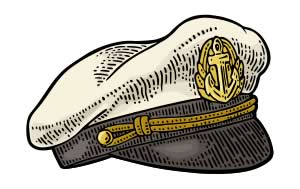 Captain's Blog on TownDock.net is all about making your time on the water enjoyable. Captain John Rahm teaches sailing and boat handling at Third Wave Sailing. Captain's Blog on TownDock.net is all about making your time on the water enjoyable. Captain John Rahm teaches sailing and boat handling at Third Wave Sailing. |

